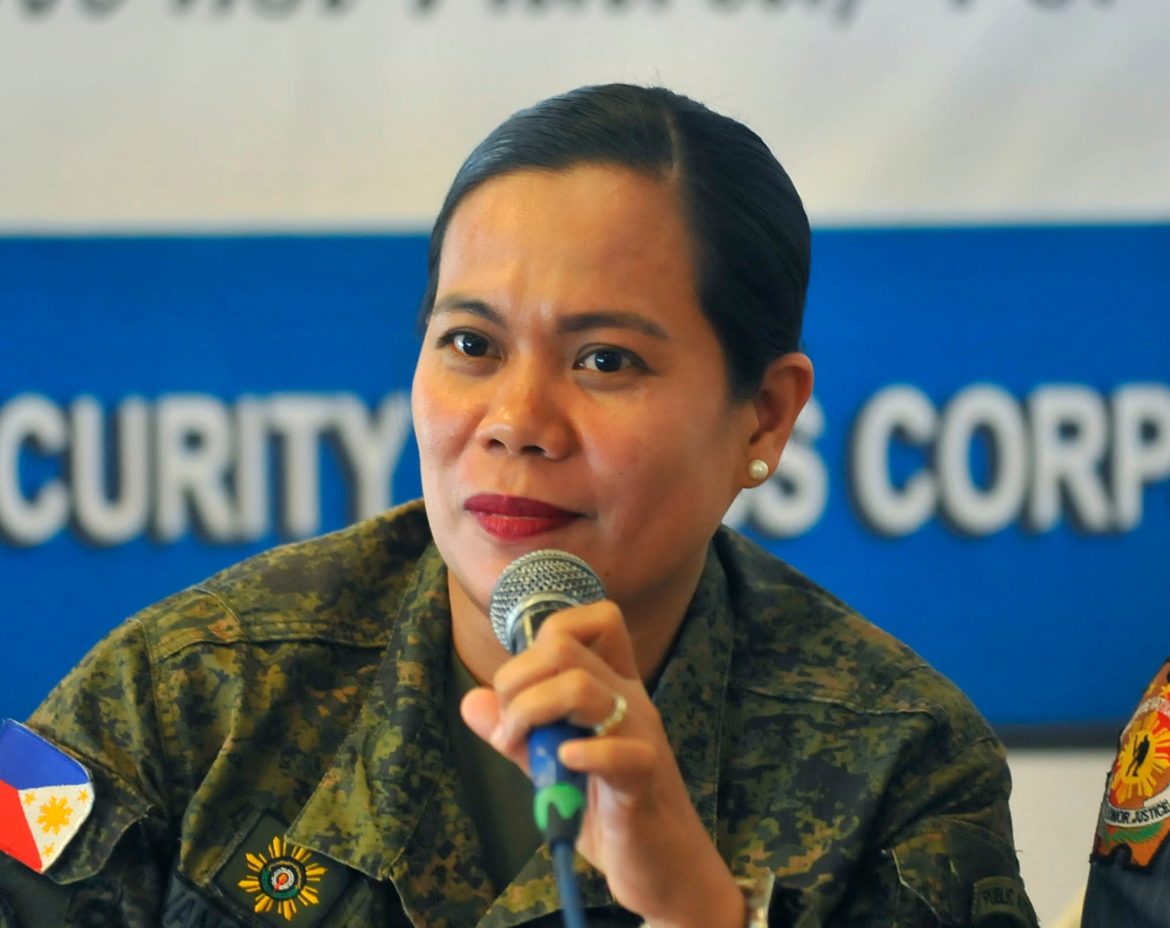THE EASTERN Mindanao Command (EastMinCom) announced on Wednesday that the Enhanced Defense Cooperation Agreement (EDCA) site at Lumbia Air Base in Cagayan de Oro City is poised to play a crucial role in humanitarian and disaster response (HADR) efforts, extending beyond its primary defense exercises.
Lt. Col. Salvacion Evangelista, spokesperson for EastMinCom, confirmed this during Wednesday’s Davao Peace and Security press briefing at The Royal Mandaya Hotel.
She clarified that the utilization of EDCA sites for HADR is not confined to Luzon, which is currently grappling with the effects of Typhoon Crising.
“We are directed to use EDCA sites as a hub for resources to help individuals who are just like what happened in Luzon,” Evangelista stated.
She added that within EastMinCom’s area of responsibility, specifically in the 4th Infantry Division’s location at Old Airport Lumbia, Cagayan de Oro, “if we have EDCA sites here that can be utilized for human and disaster response area, and to collaborate with other agencies, also that could be a hub, a staging point for support for areas that need assistance.”
The EastMinCom official’s statement aligns with the broader directive from the Armed Forces of the Philippines (AFP) chief, Gen. Romeo Brawner Jr., who on Tuesday declared that military sites under the Philippine-US EDCA would serve as “key hubs for humanitarian assistance” amidst heavy monsoon rains.
In a separate statement, Brawner emphasized that these locations would act as staging areas for prepositioning rescue equipment and consolidating relief goods.
“We are working closely with the Department of Social Welfare and Development to make sure our efforts are aligned and effective – bringing government agencies together in a whole-of-nation approach,” he said.
Brawner underscored that leveraging EDCA sites would enable the military to deliver aid faster and more efficiently to affected communities, particularly in hard-hit and remote areas, emphasizing that such rapid response could be a matter of life or death.
This utilization, he noted, complies with President Ferdinand R. Marcos Jr.’s instructions, coursed through Defense Secretary Gilberto Teodoro Jr., who chairs the National Disaster Risk Reduction and Management Council.
When asked whether American soldiers would be directly involved in providing aid from these sites, Evangelista clarified, “No. Ang ating mga kasundaluhan, our ready reserve forces are there. Sites only, but kung ang the area ay may mga equipment, then for disaster response, it can also be used not only for exercise but to calamities or disaster response.”
She also stressed that even prior to these pronouncements, AFP soldiers, including ready reserve units and regular forces, are always prepared to conduct HADR operations and are on call for emergencies.
Brawner further highlighted how the AFP’s defense partnerships, especially with the United States, are bolstering its ground troops.
“We are in close coordination with the US Indo-Pacific Command to ensure seamless interoperability as we utilize these shared facilities, transport, and airlift assets in this mission,” he said.
He concluded that the use of EDCA sites is not merely a logistical decision but “a commitment to bring support and comfort to our ‘kababayans’ (compatriots) with all possible speed and efficiency,” allowing the AFP to leverage all available advantages, including strong alliances and strategic infrastructure, to fulfill its mandate.
Signed in 2014, EDCA permits Filipino and American soldiers to train together and enables U.S. troops to construct facilities and preposition supplies and equipment within nine strategically located bases across the Philippines.
These sites include Cesar Basa Air Base in Pampanga; Fort Magsaysay Military Reservation in Nueva Ecija; Lumbia Airport in Cagayan de Oro; Antonio Bautista Air Base in Palawan; Benito Ebuen Air Base in Cebu; Naval Base Camilo Osias in Sta. Ana, Cagayan; Lal-lo Airport in Lal-lo, Cagayan; Camp Melchor Dela Cruz in Isabela; and Balabac Island in Palawan.

